A Lump Of Clay: A Language Bridge For Pre-Schoolers
Playing with clay became a favorite activity for Julie Peterman's students and a developmentally-appropriate way to develop many skills.
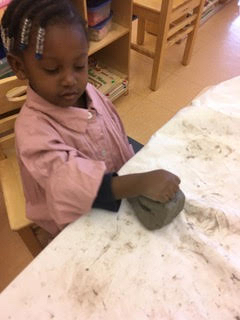
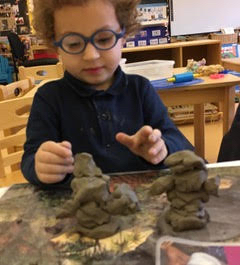
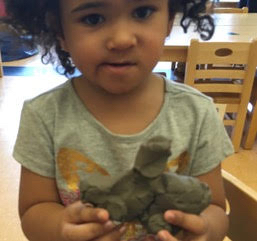
The Wonder of Clay Delivers Many Opportunities for Skill Development
Clay is a natural material: soil, water and rock. It is wet and dense and malleable. It can be both dynamic and versatile. My three year olds took to it immediately and it became a favorite daily activity, which is fitting as children crave hands-on tactile experiences. Exploring with clay has benefited my Pre-K students through so many developmental domains. They are developing large and small muscles and dexterity through manipulating the clay. They develop creativity through their building and experimenting. They are improving language through talking about their creations and using new vocabulary. They are growing math skills by counting and measuring and comparing their lumps of clay. I cannot think of a better material to use to motivate and excite my students.
Improving Fine and Gross Motor Skills
- Pinching
- Pounding
- Rolling and Making Balls
- Squishing
- Tearing and poking
Language and Social Skills
Clay play has supported interacting together and problem solving as well as language development. Developmentally, 3 year olds have some difficulty representing their ideas in words and with pen and paper. Clay as a dimensional, open-ended medium is a great bridge for children to show their thinking in a representational manner. They use it to represent things that they know about or have interest in. They shape and create, then mash and reshape. After a child brought in some shells to share from a walk on the beach, the children created shells and sea animals. During our study of transportation/how we move, children created clay rocket ships, cars, trains and train tracks. Viewing a bird’s nest outside motivated several children to create clay nests.
Children love to talk about what they are making. Clay play has proven to be one of the best language experiences this year. A child pushing her clay truck across the table exclaims “Beep, beep. Move. My truck.” Her friend responds, “Your truck has no wheels. It can’t go.” And off they go making balls for wheels and engaging in conversation on how to attach them.
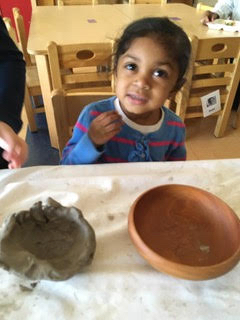

Higher Order Thinking
Tips for Working with Clay
- Artist and Craftsman Supply at 821 Chapel Street in New Haven have 25 pound boxes of clay for $20. They offer 10% off with a teacher ID.
- Store clay in double plastic bags in an airtight bin. Dip clay in water and add a little water to the bin when you put it back after each use.
“A field of clay touched by the genius of man becomes a castle.”
Og Mandino


Julie Peterman was one of our inaugural Seedlings Fellows and is now a K/1 Seedlings Facilitator. She brings the wisdom that comes with nearly four decades of teaching to Seedlings teachers to help them grow in their profession.
More from In My Classroom
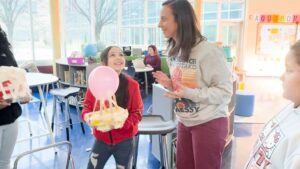
Watch Students Explore Gravity Concepts And Problem Solve through STEM
J.S. Martinez Magnet School’s STEM Resource Teacher Alyssa Granata-Basso welcomed Seedlings Educators Collaborative to observe students don their engineering hats in a hands-on problem-solving lesson exploring gravity. In teams, students designed, built, tested, and re-engineered a traveling vehicle to protect Alyssa’s friend “Eggbert” from the impact of landing.
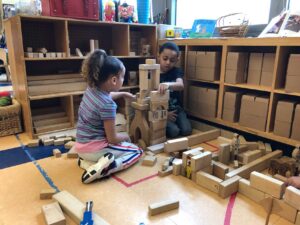
Reclaiming Kindergarten by Going Back to the Basics
As schools and districts place increasing emphasis on scores from high-stakes testing, teachers receive less autonomy in developing experiences and curriculum that engage students in meaningful learning. Over the course of one year, teachers revamped their kindergarten program, putting children’s development and interests in their rightful place as the centerpiece of curriculum by bringing play back into the classroom.
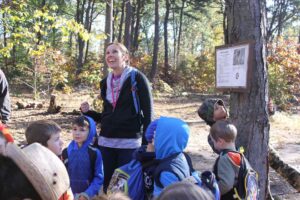
Jen Wilson’s Kindergartners Discover STEAM and Meaningful Connections in the Great Outdoors
Jen Wilson, kindergarten teacher at Cook Hill School in Wallingford, and the school librarian, Anna O’Brien, were awarded a grant from the Wallingford Education Foundation to develop a program they are calling KinderTinker. Jen and Anna are bringing the learning outside for extended free play and exploration, as well as structured STEAM-based activities that tie into the kindergarten science units.
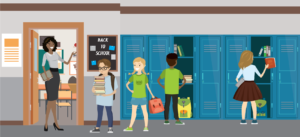
What should we expect from a 5th grader?
There are academic, behavioral and social-emotional benchmarks we expect of our general education students, no matter the year, but fifth grade, in particular, brings about new expectations as students move from lower elementary to more focused academic work, classroom transitions, and the need for organization and multitasking, among other important skills.

Animals in Winter: Student-Driven Learning to Explore Habitats
Jen Wilson’s kindergartners learn about shelter, safety, food (incorporating science, nature, math, engineering, literacy and art) through play- and project-based learning.

Hug a Tree: A Framework for STEAM Learning
Hug a Tree: A Theme for STEAM Learning Seedlings Facilitator Julie Peterman took her students out to look at trees for a meaningful learning experience. One warm late winter morning, Julie Peterman’s 3-year old class at Conte West Magnet School to were introduced to Nyree Hodges, an educator at Common Ground Urban Farm and Environmental
